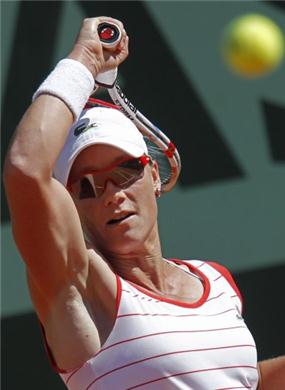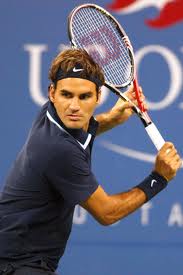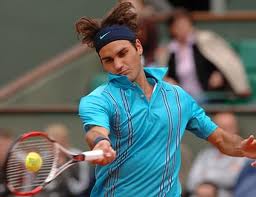"It's Amazing...": The Eureka Moment
 Sunday, December 25, 2011 at 12:34PM
Sunday, December 25, 2011 at 12:34PM  CAtennis
CAtennis 
Amazing
I kept the right ones out
And let the wrong ones in
Had an angel of mercy to see me through all my sins
There were times in my life
When I was goin' insane
Tryin' to walk through
The pain
When I lost my grip
And I hit the floor
Yeah,I thought I could leave but couldn't get out the door
I was so sick and tired
Of livin' a lie
I was wishin that I
Would die[Chorus:]
It's Amazing
With the blink of an eye you finally see the light
It's Amazing
When the moment arrives that you know you'll be alright
It's Amazing
And I'm sayin' a prayer for the desperate hearts tonightThat one last shot's a Permanent Vacation
And how high can you fly with broken wings?
Life's a journey not a destination
And I just can't tell just what tomorrow bringsYou have to learn to crawl
Before you learn to walk
But I just couldn't listen to all that righteous talk, oh yeah
I was out on the street,
Just tryin' to survive
Scratchin' to stay
Alive
[Chorus]
The year was 1993 and I was a 16 year know-nothing living and trying to develop as a tennis player in the Midwest. Aerosmith had just released the album "Get a Grip", their first album since 1989 and the band's best-selling studio album. This was a time before cell phones, mp3 players, laptops or even internet (yes, it existed, but, due to the costs of computers and access, not all of us had access to it so it was, by in large, meaningless). CDs and CD players were also a novelty and I was very excited when my parents gave me some cash to buy a CD player (instead of lugging around heavy, portable tape-players).
So into the store I walked, excited about the possibility of owning one of these amazing pieces of "modern technology." I was even more stoked (too antiquated?) when the salesperson threw in a copy of Aerosmith's new album as a promotional incentive. I was more into Metallica back then but, what the heck, $24 (cost of a CD) wasn't exactly burning a hole in my pocket so I said "what the heck" and I took my new purchase and popped the new CD in. For some reason, the song "Amazing" really resonated with me and, particularly, the references to learning to crawl before learning to walk, life's a journey not a destination and "with the blink of an eye you finally see alright" (full disclosure: I always thought that they sang "see the light"). It was this last bit that stood out for me the clearest and the longest. It was only later in my life that I put "2 and 2 together."
You see, at 16, I felt that as I tennis player I could go "toe to toe" with anybody in the world my age. I had a good, hard serve, steady ground-strokes (could pin-point my shots with precision, pace and a variety of spins), solid volleys and I was fit. If anything, I was obsessed with fitness and, in addition to grinding on the ball machine 2 hours a day and hitting hundreds of seres, I spent a great deal of my day in the gym. It was at this age when I realized that winning in tennis was more than just about forehands and backhands. I had the forehand and the backhand and the serve; this allowed me to stop worrying about what was going on 2.5feet in front of me at the end of my finger tips (e.g. whether I had this forehand or that; whether the face of the racket was opened or closed; etc). In other words, it was as if the fog had been lifted off the court and I was no longer focusing on my side of the court but my opponent's. I looked up and forward instead of down.
In other words, for the first time in my tennis-playing life, I was seeing things clearly. I was reading my opponent's body language and knew what he was planning and how he was feeling. I was becoming attuned to situational awareness and knew how the point was going to unfold within 2 shots. In other words, I experienced a "Eureka" moment..the point where I finally "got it". Now, bear in mind, I was still no world-beater. However, I felt that at this point I was beginning to have a global perspective of the sport and studying the game's many facets became an addiction. Scientific research supports the notion that when something is learned through-trial and error, the brain builds new pathways indicating the the subjects had a "sudden insight" about how the world works, Abrupt transitions between prefrontal neural ensemble states accompany behavioral transitions during rule learning (Durstewitz D, et al.; Neuron, May 2010). Later, I realized that the Eureka moment is not something that is limited to tennis or even sports. Some musicians, business people, inventors, artists, professionals, politicians and others experience this at some point in their life. Unfortunately, the vast majority experience it too late to be able to make an impact in their own lives or the lives of others. Some "desperate souls" might not experience this moment of clarity at all.
What sets some people apart? Why do some experience the Eureka moment at an early age while others struggle with their search for enlightenment? Why did Nadal break into the top 100 so soon and achieved such great success at such an early age? Same with Sampras, Chang, Agassi, Although empirical data may be lacking, one can't help but wonder whether the "10,000 FOCUSED hour rule" is involved. For example, legendary coach Robert Lansdorp is of the opinion that by age 16, there is very little that can be done in terms of performing a major technical overhaul on a player's strokes. It all starts at around 8 years old and then, by 16, everything should sort of gel into place from a technical standpoint. Tennis legend Johan Kriek agrees: "...by 16 it should be 'all there'...minor changes possible after that but not much more." In other words, the players who make it tend to emphasize the technical aspect of the sport first (i.e. refining the gross motor skills) and, as they start to get this part of the game - as the strokes become rock-solid, powerful, efficient, adjustable - they begin to shift the focus towards the tactical aspect (of course, strategy is also learned when one is very young and very small, but in manageable, age-apropriate doses).
Nevertheless, too many young kids are thrown into tournament after tournament and they never have the opportunity to master the basics of the game. Many struggle with the meat-and-potatoes of the game long after the substantial emphasis should have shifted to tactical and physical training. If you're in the tennis-teaching or tennis-developing business, you are familiar with a great number of 16+ year old players who have a ton of potential but whose chance have been ruined by not learning the "correct" things the first time around. In other words, they don't spend enough focused hours honing their basic skills and, after each tournament, they have to go to the drawing board in order to clean up the mistakes that they have learned over the weekend. So instead of a learn-solidify-learn-solidify-learn-solidify process, it's a protracted learn-unlearn-learn-unlearn-learn-unlearn system. When results are starting to matter the most (U18s), players are still tinkering with glitches in their strokes.
If there is an all-encompassing answer, I'm not certain that CAtennis.com has it. The simple advice (from experience and observation) is for player (and parents) to focus on strokes first and slowly incorporate more and more strategy into the practices. The initial focus should be on having the players lay down a solid tactical foundation - mastery of every stroke under all possible scenarios along with a general understanding of use and application. Fretting about results too soon or too often could be detrimental to the overall learning process (and quite expensive). Remember this expression from the field of law: touch a file once (i.e., do it once; do it right).






